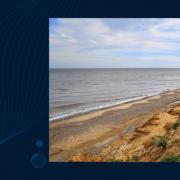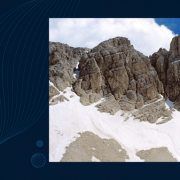From the devastating impacts of climate change to the unprecedented loss of biodiversity, it’s clear that the health of our planet is a top priority. As we continue to grapple with these complex environmental challenges, it’s becoming increasingly apparent that the solutions will require a multifaceted approach. From policy changes to technological innovations, there are many paths forward that should not overlook the role of education.
In order to address the increasing environmental challenges we face, we must equip students with the knowledge and skills to create a sustainable future for all.
That’s where earth observation comes in.
By leveraging the power of earth observation data and technology, educators can provide students with the relevant skills to better keep track of the dynamics of our planet.
If you are new to earth observation, a definition is necessary: Earth Observation is defined as the process of acquiring observations of the Earth’s surface and atmosphere via remote sensing instruments, for example satellites or drones1. This field plays a crucial role in understanding the planet, monitoring and mitigating climate change, preventing natural disasters such as earthquakes, floods or fires, and better managing natural resources.
If you’re a school administrator or a teacher here are the 4 reasons why incorporating Earth Observation training into the school curricula is essential to prepare students to become informed and prepared citizens who are ready to act for environmental protection.
Reason #1 Earth Observation will enable your students to be environmentally aware and make a difference.
With the growing availability of satellite data and the free and open data policies, satellite observations can be considered more and more as a valuable source of information to monitor actions on the sustainable development of our planet.
For instance this is what is stated in the ESA Compendium of EO contributions to the SDG Targets and Indicators2. Satellite data can bring a relevant contribution in measuring progress towards many Sustainable Development Goals. Guaranteeing the supply of EO data and ensuring capacity to use such data are critical steps that can help countries in setting their SDG targets and monitor progress.
By bringing earth observation into the classroom, your students will try their hand at developing applications that extract value-added information for monitoring environmental, climate and/or land resources.
Reason #2 Your students will get familiar with cutting edge technologies.
Teaching information extraction techniques from satellites data goes hand in hand with the use of advanced technologies.
New information technologies are revolutionising the way we manage the vast amount of data from satellite missions to address environmental challenges. The advent of cloud environments represents a crucial breakthrough: users no longer have to spend time and resources downloading data to their computer for processing but can access them directly on the cloud to analyse them more efficiently.
In addition, cloud environments co-locate computing power and data, allowing to perform data processing and analysis tasks with a scalable capacity, even in the order of petabytes.
For example, here at EarthConsole® we offer virtual machines that can help your students try their hand at building algorithms that run on Earth observation datasets. The virtual machine comes with pre-installed software for earth observation data exploitation and can be easily configured with the same settings for an entire classroom, allowing students to use it from anywhere and with their own devices.
This technological revolution represents an unprecedented opportunity that opens new horizons for the development of innovative and efficient solutions to tackle climate change and better manage natural resources.
Reason #3 You will orientate your students towards STEM Education
Earth Observation data specialists can have differentiated university backgrounds ranging from engineering to computer science and mathematics. Integrating earth observation into your curricula could be an excellent way to broaden the prospects for choosing a university and/or professional path in the STEM field (Science, Technology, Engineers and Mathematics).
Also, let’s not forget that supporting STEM Education could help addressing the gender and diversity gap in science and technology fields. According to the UNESCO Science Report 20213, women make up only 28% of engineering graduates and 40% of those in computer science. Encouraging and supporting underrepresented groups to pursue STEM education and careers can help to bridge this gap and ensure a diverse and inclusive workforce.
Reason #4 There is high-demand for Data Specialists
The Earth Observation industry is growing, with a rapidly expanding market and increasing demand for advanced technologies, services and thus professionals.
The EUSPA EO and GNSS Market Report 20224 states that Earth Observation data and service revenues are set to double from roughly €2.8 billion to over €5.5 billion over the next decade.
The market for Earth Observation applications is boosted by a large pool of value-added services contributing to the most variegated market segments ranging from Climate Services to Urban Development and Cultural Heritage, Agriculture, Energy and Raw Materials and the Insurance and Finance Segment.
With the industry, the demand for specialized workforce grows as well.
As highlighted in the LinkedIn Jobs on the Rise Report 2023, Data Engineer is one of the fastest-growing job titles in Europe over the past five years. Data engineers specialize in developing tools for collecting and analyzing large volumes of data, to address complex challenges and aid decision-making.
In conclusion, Earth Observation is a powerful tool that educators should consider bringing into their high school classrooms. By incorporating Earth Observation technologies and data into their curricula, educators can provide students with hands-on learning experiences that enhance their understanding of the natural world and help develop essential skills.
With the potential to inspire and engage students in science and technology, Earth Observation has the power to make a lasting impact on the next generations.
1 ESA Newcomers Earth Observation Guide https://business.esa.int/newcomers-earth-observation-guide
2 EARTH OBSERVATION FOR SDG “Compendium of Earth Observation contributions to the SDG Targets and Indicators” https://eo4society.esa.int/wp-content/uploads/2021/01/EO_Compendium-for-SDGs.pdf
3 UNESCO Science Report 2021: The race against time for smarter development https://www.unesco.org/reports/science/2021/en/download-report
4 The EUSPA Earth Observation (EO) & Global Navigation Satellite System (GNSS) Market Report https://www.euspa.europa.eu/sites/default/files/uploads/euspa_market_report_2022.pdf







